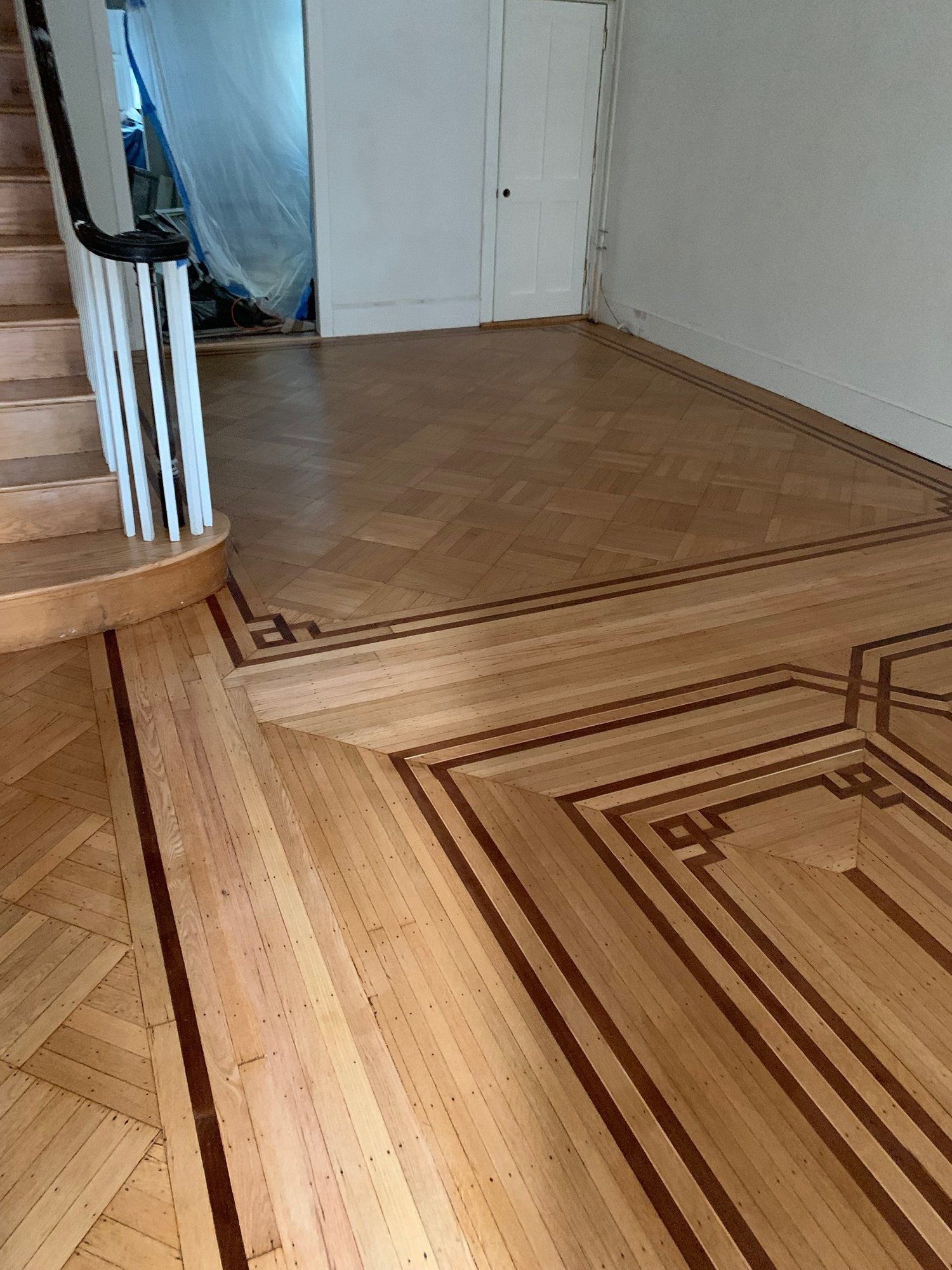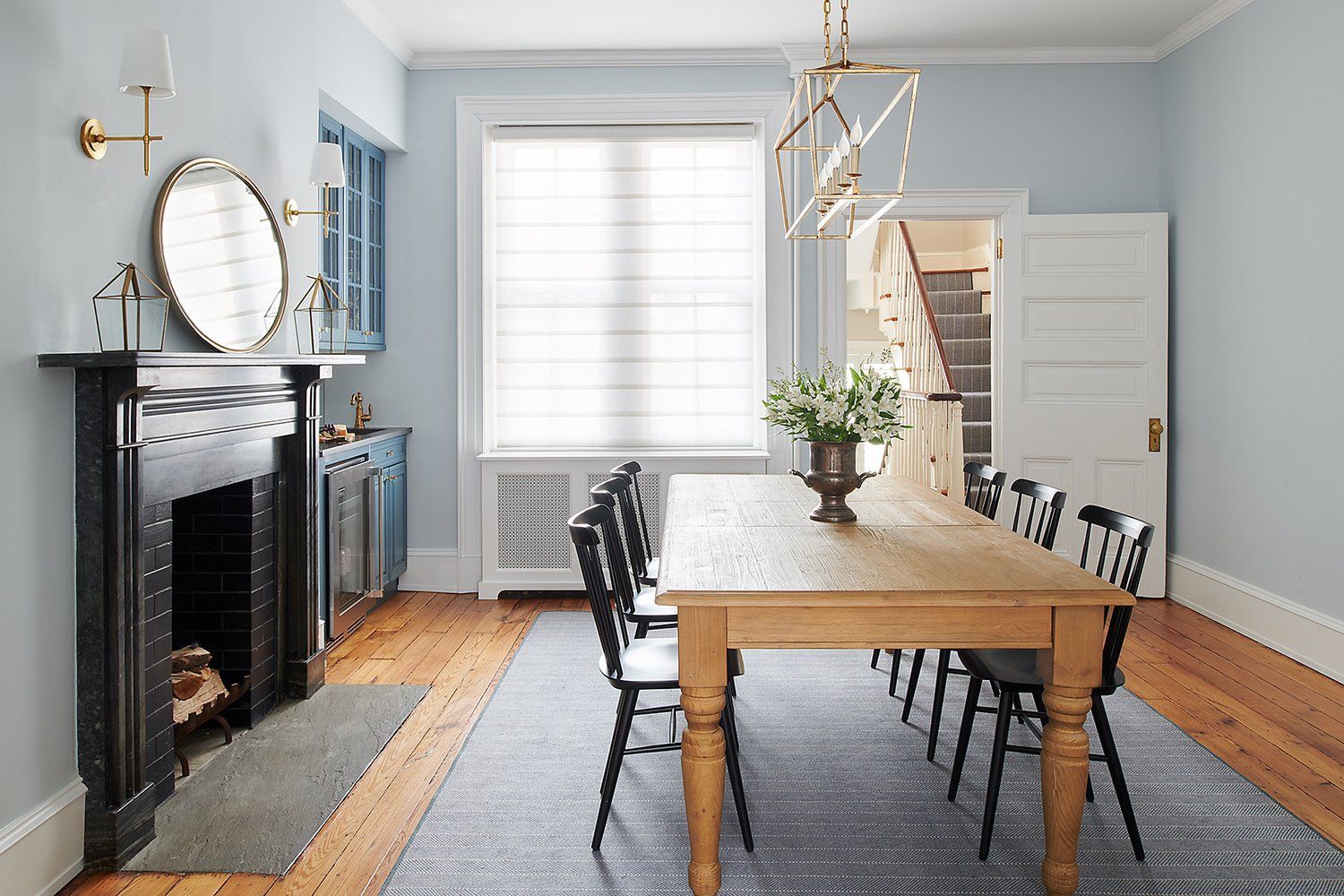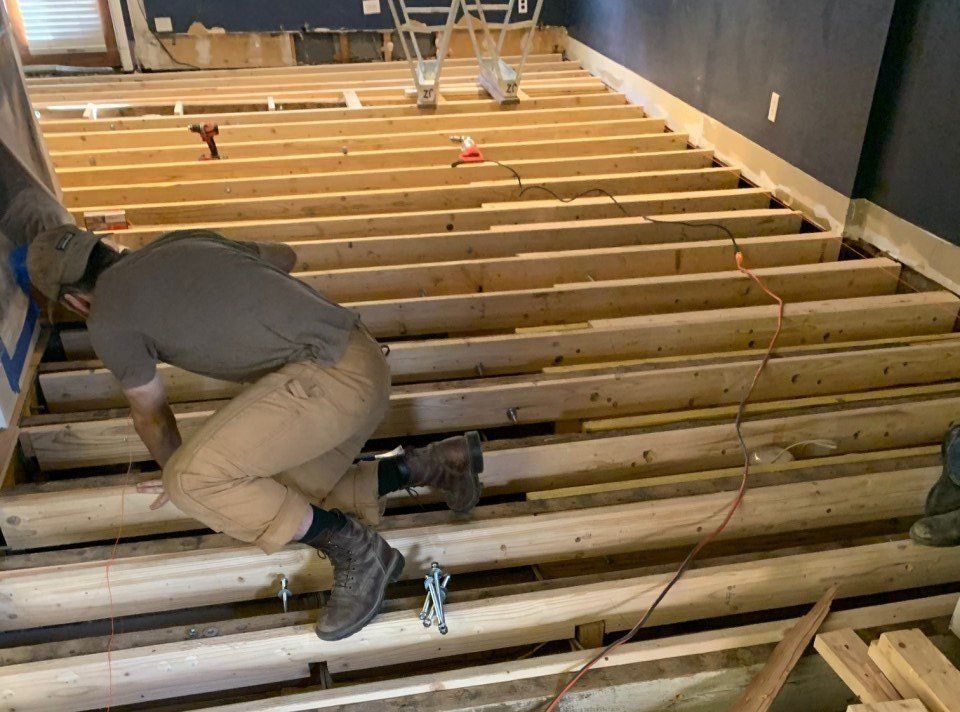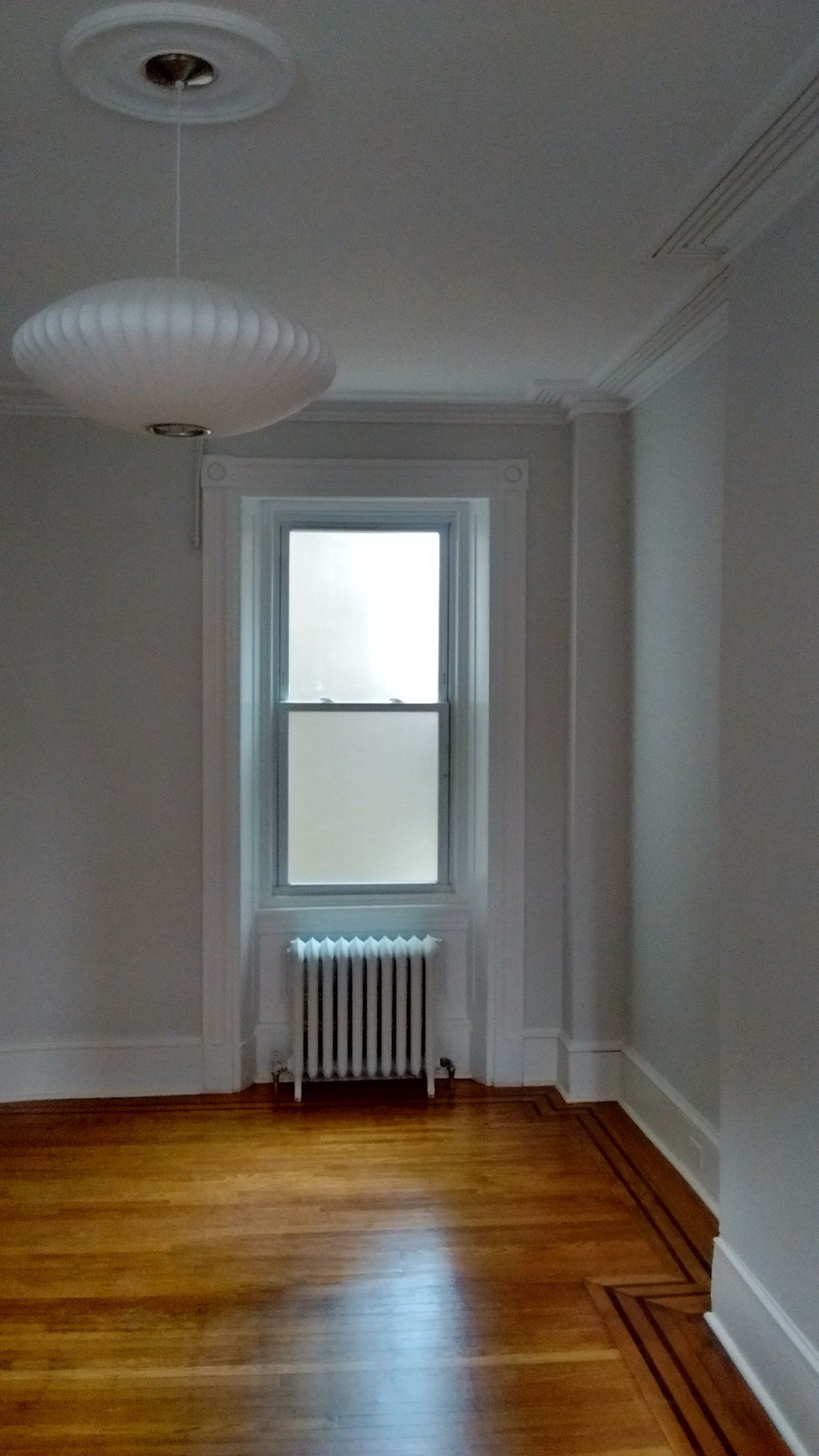Rowhouse Floors
One of the reasons people love old Philadelphia rowhouses is because of the hardwood floors. Interestingly, when a lot of these homes were built, it was not fashionable to have uncovered wood floors, and so you would have found carpets or oilcloths covering the wood. But there was always wood underneath, because they didn’t make plywood back then. Read on as I unpack the different types of floors you’ll find in rowhouses.

We established that they didn’t have plywood when most of these homes were built. Plywood is used as subflooring these days. As the name implies, subflooring is the base that goes under your finish floor. Back in the day they would use planks of wood as subfloor. So if you house has wide boards, 4-7” wide and pine, fir or a mix of softwoods, and there’s only one layer of wood, that’s probably the original subfloor. How do you know if you only have only layer? Turn on the basement lights at night and look at the floor from the first floor. If you can see light coming through the cracks, that’s your subfloor. And there’s nothing wrong with that, as long as you like the look. Common complaints we get have to do with the fact that basement air travels through the floor and the gaps also make it hard to keep clean. Is there a good way to fill these gaps? Honestly, it’s best to live with them. Wood filler tends to look bad and crack out over time. The rope solution? We’ve never done it, but if you want to give it a try it could work. In the photo above, you’re looking at a common type of floor we find installed overtop of a subfloor. Top nailed white oak floors with mahogany inlays. This example also has parquet portions (short pieces installed in alternating squares). If you can see the nails that’s a sign that the floor is thin, usually about 3/8” thick. Depending on how many times it has been refinished they may have sanded away so much material that they no longer can be refinished, but we don’t come across that situation often.

The floor above is a softwood subfloor that has been restored and makes a great floor. Sometimes we have to replace boards that have splintered or cracked, but if you use wood of a similar vintage, these repairs can blend in, or at the very least add character. If you love the rich amber color that some floors have, you may want to look into an oil polyurethane finish. These give off more VOC’s than other finishes, and your neighbors may even complain about the smell during refinishing. We try to avoid these, and like the Bona suite of water based finishes instead. Another option you might want to read up on are hardwax oils.

Over time, whether because of poorly executed renovations, structural damage, or just plain old settling - floors sometimes end up out of level. This is a common thing to encounter in an old rowhouse, and we often just live with it, as long as it’s not getting worse. Sometimes it has been like that for 100 years. But if the floors are way off, it can become a challenge for cabinetry, furniture and even walking after you’ve had a couple drinks. If you find yourself in that situation, it might be time to level the floors (or cut back on the drinking). In the photo above, you see the way we approach this. The flooring has been removed, and we “sister” the floor joists with more wood, bolted into the original joists. Once this is complete, we add new plywood and new floors.

Can the elaborate floors of yesteryear be recreated today? Absolutely. The area photographed above had been turned into a tiled bathroom for an elderly person that couldn’t make it up stairs anymore. When the new owner wanted to recreate the original parlor and remove the bathroom, we had to take out a wall, and then install flooring and inlays to match the original floors, which were still in place outside of the bathroom. You would never know what this room has been through. See that plumbing chase in the corner? We even continued the plaster crown molding around that to make it seem like it had always been there.
Thanks for reading. If you have a question about your roof, or anything else in your house, use our contact form to reach out and I’ll be happy to see if we can be of assistance.
Subscribe to Rowhouse Remodeling
Sign up with your email address to receive monthly insights into your rowhouse.

